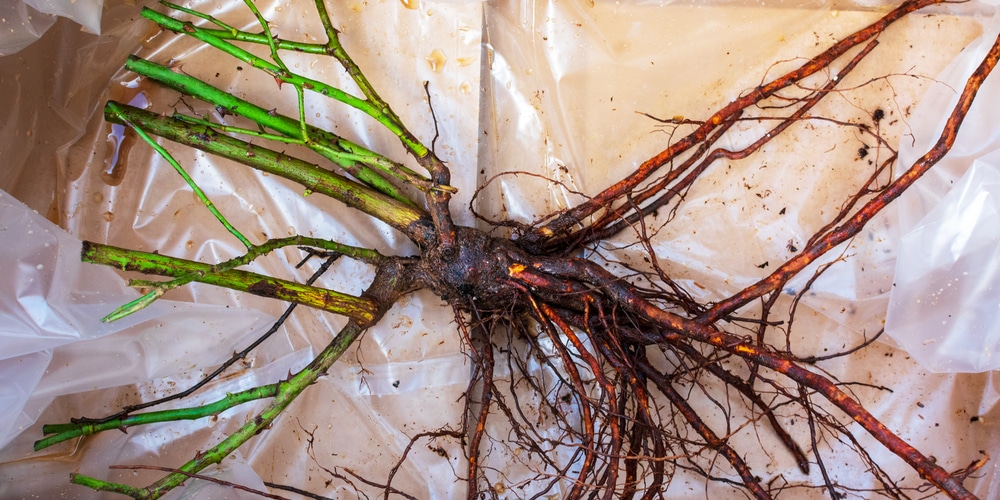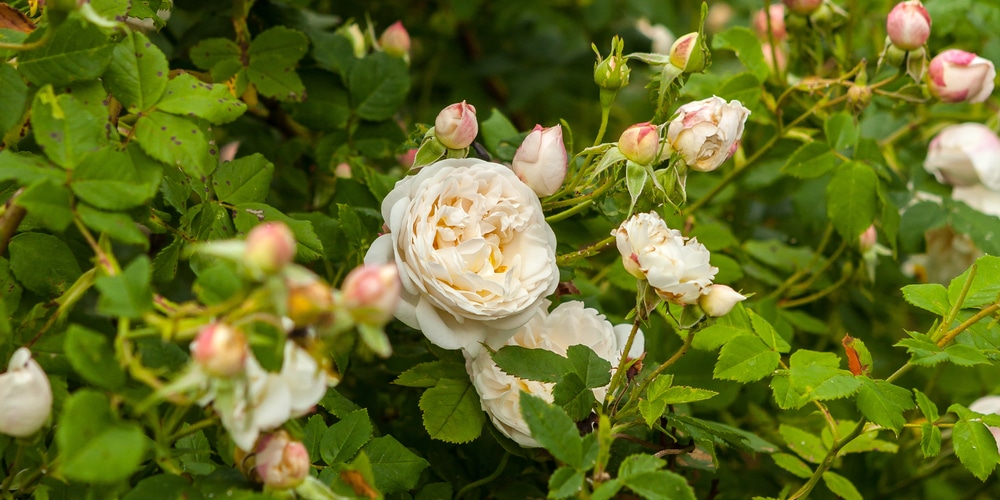Rose plants are one of the most beautiful and classic flowers that you can have in your garden. They have been around for centuries and are prized for their delicate blooms and sweet fragrance. When roses are happy, they’ll bloom prolifically, filling your garden with an utterly intoxicating fragrance. But, if they’re unhappy, roses can quickly become a thorny problem.
Sometimes, roses are grafted onto another plant’s root system, which is known as rose rootstock. This is done to create a more vigorous plant that is better able to resist disease and pests.
This is also done to create more blooms or to create a plant that is more tolerant to cold weather. However, if the rose rootstock is taking over, it can quickly choke out the grafted plant.
What is a Rose Rootstock?
A rootstock is the lower part of the plant responsible for anchoring it into the ground and absorbing nutrients. It is considered the plant’s base and comprises a portion of its roots, particularly for grafted plants, including roses.
However, in some cases, the rootstock can become too aggressive, causing it to take over the entire plant. When this happens, the rootstock could compete with the grafted plant for water and nutrients, eventually killing it.
Rose Rootstock Taking Over: Why Does This Happen?
There are several reasons why the rootstock might take over the grafted plant. One reason is that the rose rootstock is simply more vigorous than the grafted plant.
This could be either because the rootstock was not properly pruned when the plant was grafted or because the grafted plant is weak and unable to compete with the rootstock.
Another reason why the rootstock might take over is that it is better suited to the growing conditions than the grafted plant. For example, if the rose rootstock is more drought-tolerant, it will be able to outcompete the grafted plant during periods of drought.
How to Stop Rose Rootstock from Taking Over
While seeing a grafted plant bloom a different kind of blossom can be beautiful, it’s not what most gardeners are hoping for. While this is a challenging problem to solve, stopping the rootstock from taking over is possible.
Remove the Grafting
The first step is to remove the grafting. This can be done by carefully cutting away the rose rootstock, just below the point where it meets the grafted plant. Although this might not be the most aesthetically pleasing option, it will allow the grafted plant to grow on its own.
Prune the Rootstock
If you don’t want to remove the grafting, you can try pruning the rootstock. This will help control its growth and prevent it from taking over the plant. To do this, simply cut away any roots that are growing outside of the planting hole. You can also try to dig up the rootstock and replant it deeper into the ground.
Fertilize the Grafted Plant
Fertilization often helps to encourage growth in grafted plants. By fertilizing the grafted plant, you can help it to outcompete the rootstock for nutrients. Try using a fertilizer that is high in nitrogen, as this will promote foliage growth.
Keep an Eye on Your Rose
It’s important to keep an eye on your rose plant, even after you’ve taken steps to control the rootstock. Rootstocks can be very aggressive, so it’s important to monitor the plant and make sure that the rootstock isn’t taking over again.
Tips When Grafting Roses to Prevent Rootstock Taking Over
When grafting roses, there are a few things you can do to prevent the rootstock from taking over.
First, make sure to use a sharp knife when making the cut. This will help ensure a clean cut and prevent the rootstock from being able to grow into the scion. As much as possible, sterilize the knife before use. This is a crucial step, as even the smallest of openings can lead to the rootstock taking over.
Second, try to match the rootstock and scion as closely as possible. This will help to ensure that the two plants are compatible and will reduce the chances of the rootstock taking over.
If you are using a bud union graft, make sure that the scion is at least two buds above the bud union. This will help prevent the rootstock from growing up and eventually taking over the plant.
Lastly, keep an eye on the plant after grafting. The first few weeks are critical, and if you see any signs of the rootstock taking over, take action immediately. You may also want to check for rose suckers every once in a while. Your goal is to keep the rootstock in check so that it doesn’t take over your plant.
Related Article: White Spots on Rose Leaves


